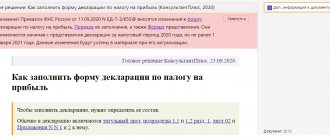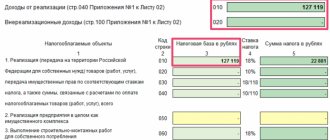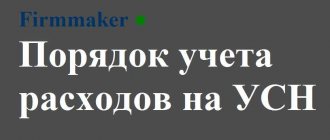Today, Russian exporters of products have the opportunity to use a zero VAT rate, and this operation must be carried out according to accounting. In this case, the company is required to collect a supporting package of documents. It is necessary exclusively for the tax service, and no confirmation in 1C: Accounting is required.
In this case, companies receive no more than 180 days to complete all documents. If the deadline is not met, VAT will have to be paid in full.
In order to confirm the use of a 0% VAT rate, the following set of actions is required:
- Setting up accounting policies;
- Capitalization of export goods;
- Registration of export sales;
- Creation of the document “Confirmation of zero VAT rate”;
- Create a shopping book.
Registration of receipt and sale
After all the checkboxes have been checked in the receipt, the system offers the user a new column “VAT Accounting Method”. For this case, you need to select the “Blocked until 0% confirmation” option. This point is the main feature of operations related to the resale of goods for export.
Next, you need to register the invoice and check the transactions generated after posting the document.
When making a purchase on the domestic market from a supplier, the buyer is forced to pay VAT, but has the right to subsequently demand a refund of the amount paid after its export resale. This will happen after the right to use the VAT rate of 0% has been confirmed.
After this, VAT is blocked in all existing registers.
Registration of sales in the program is carried out with a tax rate of 0%.
When entering into an agreement, you will need to indicate the settlement currency in which the export operation is carried out. In this case, these are American dollars USD.
Accountant's Directory
If the company cannot confirm the fact of export, then it will have to pay VAT. In this article we told you what order to follow.
Unfortunately, the need to pay VAT is not everything. Inspectors will charge penalties, and retroactively. The Russian Ministry of Finance insists on this in Letter No. 03-04-15/140. Moreover, officials believe that if the export is subsequently confirmed, then it will not be possible to return the paid penalties. Is it possible to refute such a position?
When a company is deprived of the right to a zero VAT rate
Application of a 0 percent rate on exported goods is possible only if the company submits to the inspection the documents provided for in Art. 165 of the Tax Code of the Russian Federation.
Please note: you must take the papers to the inspectorate simultaneously with the declaration at the zero VAT rate for the tax period in which the set of documents was collected (clause 10 of Article 165 of the Tax Code of the Russian Federation). To do this, the company has 180 days from the moment the goods cleared customs.
Having received all the necessary documents, the tax authorities decide whether to offset the VAT, return it or refuse a refund. Officials must make their choice within three months, counting from the date of submission of the export declaration and the full package of documents (clause 4 of article 176 of the Tax Code of the Russian Federation). If inspectors want to refuse a company, then they are obliged to provide a reasoned conclusion.
The reasons for refusal can be very different. Let's say there is an inaccuracy in the submitted documents. Or the amount of revenue received does not match the contract amount. Refusal is also possible in a situation where it turns out that the suppliers from whom the company purchased goods for resale for export did not transfer VAT to the budget.
By the way, we note the nuance of the new rules - they come into force next year. Having identified a violation in the VAT refund documents, the inspector is obliged to draw up a report. And the organization has 15 days to submit objections and defend its case without going to a higher authority or court.
Such a norm in Art. 176 of the Tax Code of the Russian Federation is introduced by Federal Law of July 27, 2006 N 137-FZ. Currently, the company is only informed about the refusal of tax refund. Therefore, now very often disputes about VAT refunds are resolved in arbitration courts. While the litigation continues, 180 days may pass.
So, if it was not possible to collect a set of documents or the inspectors denied the company the right to zero VAT, then the export of goods is taxed at the usual rate.
Calculating tax
If the company cannot confirm the export, you need to:
- charge VAT on revenue;
- deduct the “input” tax related to the costs of production and sale of exported goods;
- pay VAT to the budget (less “input”);
- submit to the inspection an updated VAT return for the tax period in which the goods were actually shipped. Also in this case you need to fill out section. 3 VAT returns at zero rate.
Tax base calculation
The tax base is calculated based on revenue - all income associated with payments for goods sold. For unconfirmed exports, the tax base is determined on the day of shipment of the goods (clause 9 of Article 167 of the Tax Code of the Russian Federation).
Note. From January 1, 2006, there is no need to pay VAT on exported goods (Clause 9, Article 154 of the Tax Code of the Russian Federation).
As a general rule, the day of shipment is the date on which the goods are transferred to the buyer or carrier. But when it comes to export operations, the date of shipment is considered the day the goods are placed under customs regime. This date is on the customs officers’ stamp “Release permitted” on the customs declaration. Letter of the Federal Tax Service of Russia dated May 18, 2005 N 03-2-03/829/16 encourages you to be guided by such rules.
Please note: from January 1, 2006, revenue received in foreign currency is recalculated on the date of payment for shipped goods (clause 3 of Article 153 of the Tax Code of the Russian Federation). However, a recalculation is only necessary if the right to apply the zero rate is confirmed. If export is not confirmed, then the tax base is determined on the date of shipment.
Such clarifications with reference to the Ministry of Finance of Russia are given in the Letter of the Federal Tax Service of Russia dated March 30, 2006 N MM-6-03 / [email protected] The fact is that in the second sentence of clause 3 of Art. 153 of the Tax Code of the Russian Federation refers only to transactions for which a zero rate is applied. And firms that fail to confirm it must apply a rate of 10 or 18 percent.
What rate should I apply?
The VAT that must be paid to the budget should be calculated using the following formula:
contract amount x 18% (10%) = VAT amount payable. (the tax base)
Let us note that this issue was not always clear. The fact is that the zero declaration, approved by Order of the Ministry of Taxes of Russia of November 20, 2003 N BG-3-03/644, provided for the use of settlement rates of 20/120, 18/118 or 10/110.
Moreover, the developers of that declaration approached the issue of calculating VAT more loyally than legislators. After all, in paragraph 9 of Art. 165 of the Tax Code of the Russian Federation has always stated that if export is not confirmed, rates of 10 or 18 (20) percent should be used.
But if, when checking the period when the old declaration form was in force (say, 2004), inspectors accuse the company of incorrectly calculating VAT, then the accountant can appeal to the form in force at that time. This will allow the company to avoid a fine (Resolution of the Federal Antimonopoly Service of the East Siberian District dated May 18, 2004 N A33-17432/03-С3-Ф02-1663/04-С1).
Amount to be paid
The tax amount is determined. But this does not mean that all of it needs to be transferred to the budget. The calculated VAT is reduced by tax deductions provided for in Art. 171 of the Tax Code of the Russian Federation.
It is worth clarifying: ch. 21 of the Code does not directly say that a taxpayer who has not confirmed the right to a 0 percent rate can take advantage of deductions. But this clearly follows from the Procedure for filling out a tax return for VAT at a zero rate.
This document was approved by Order of the Ministry of Finance of Russia dated December 28, 2005 N 163n. In particular, in this situation, section. 3.
There, in column 5 of line 010, the amount of tax that the company paid for goods (work, services) purchased for the purpose of unconfirmed export is shown.
Example. For resale for export, Vector LLC bought a batch of furniture for 590,000 rubles. (including VAT - 90,000 rubles). It was sold overseas for $30,000. Within 180 days, the company was unable to confirm the fact of export. Therefore, in August 2006, the accountant charged VAT.
In Russia, goods sold are subject to VAT at a rate of 18 percent. Let's assume that the dollar exchange rate on the day of shipment was 26.80 rubles/USD. The tax base for calculating VAT will be equal to:
30,000 USD x 26.80 rubles/USD = 804,000 rubles.
VAT was calculated as follows:
804,000 rub. x 18% = 144,720 rub.
The following entry was made in accounting:
Debit 68 subaccount “VAT refundable”
Credit 68 subaccount “VAT accrued”
- RUB 144,720 — VAT is charged on unconfirmed exports.
Now the tax paid to suppliers can be deducted:
Debit 68 subaccount “VAT accrued” Credit 19
- 90,000 rub. — VAT paid to the supplier is accepted for deduction.
Thus, the amount of VAT actually subject to additional payment will be 54,720 rubles.0). The company's accountant transferred it to the budget:
Debit 68 subaccount “VAT accrued” Credit 51
- RUB 54,720 — VAT is transferred to the budget.
Note. How to reflect VAT in accounting for unconfirmed exports is stated in Letter of the Ministry of Finance of Russia dated May 27, 2003 N 16-00-14/177.
Controversy over penalties
If the company does not confirm export within 180 days, tax authorities will charge penalties for late payment of VAT. At the same time, officials determine the period for which penalties are calculated as follows.
In this case, VAT must be paid based on the results of the tax period in which the shipment date falls. Therefore, the deadline is no later than the 20th day of the month following the expired tax period (month or quarter).
This means that penalties are accrued for each calendar day of late starting from the 21st. This position is expressed in Letter of the Ministry of Finance of Russia dated July 28, 2006 N 03-04-15/140. And judging by the Letter of the Federal Tax Service of Russia dated August 22, 2006 No. ШТ-6-03/ [email protected] , the tax authorities agree with this opinion.
However, one can and should argue with this approach of officials. After all, the company becomes obligated to pay tax only on the 181st day - when the time allotted for collecting documents has expired. And clause 2 of Art. 44 of the Tax Code of the Russian Federation precisely says that tax must be transferred only when circumstances arise that require its payment.
This position is fully confirmed by Resolution of the Presidium of the Supreme Arbitration Court of the Russian Federation of May 16, 2006 N 15326/05.
Let us quote him: “From the requirements of paragraph 9 of Article 165 of the Code, it follows that the obligation to pay value added tax... arises on the 181st day, counting from the date of release of goods by regional customs authorities in export or transit mode.
Therefore... the penalties provided for in Article 75 of the Code are accrued starting from the 181st day...” Thus, the demands of officials do not comply with the Code. But, unfortunately, the exporter will most likely have to prove his case in court.
Confirmation of zero VAT rate
Next, the VAT registration assistant is called. In this case, you will have to use two sections “Confirmation of the zero VAT rate” and “Creation of a 0% purchase book”.
In the first document, the tabular part is filled out, and if the data in the implementation documents is filled out correctly, the information will be entered automatically.
The user is only required to select the “0% rate confirmed” option. After this, the document is processed and the generated accounting entries are checked.
In this case, no postings were generated, but VAT was moved across the registers. In particular, the entry appeared in the register “VAT on sales 0%”. Two more entries were created in the “VAT presented” section.
Document Customs declarations (export)
Now in the Sales
Customs declarations (export) appears
This document is intended for registration of customs declarations, shipping documents confirming the export of goods outside the Russian Federation.
This document is regulatory. Information from it is used to automatically fill out Registers of complete customs declarations, transport and shipping documents.
Creating entries in the purchase book with 0% VAT
The 1C program analyzes the status of the VAT account based on the registers used. When creating a purchase book, all entries in it will be entered by the system automatically.
In this case, the formation of a book during posting involves the creation of postings. They demonstrate that the amount of previously paid VAT during an export operation for the sale of goods has been accepted for deduction.
What to do if in 1C the 0% rate is not confirmed
If there is no confirmation of a 0% VAT rate, the expenses incurred will have to be written off under the “Other expenses” category. In this case, the write-off process is carried out through the document “Confirmation of the zero rate”.
But at the same time, the system will make the appropriate entries and draw up an invoice, which will be reflected in the sales book on the “Additional Sheets” tab.
In this case, the system automatically calculates the VAT amount at a rate of 18%, which is considered standard. This amount can be reduced by the amount of VAT paid when purchasing the goods. In our case, it is 18 thousand rubles.






